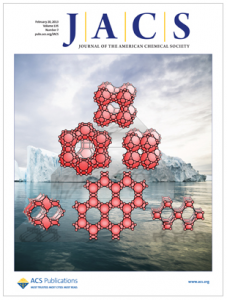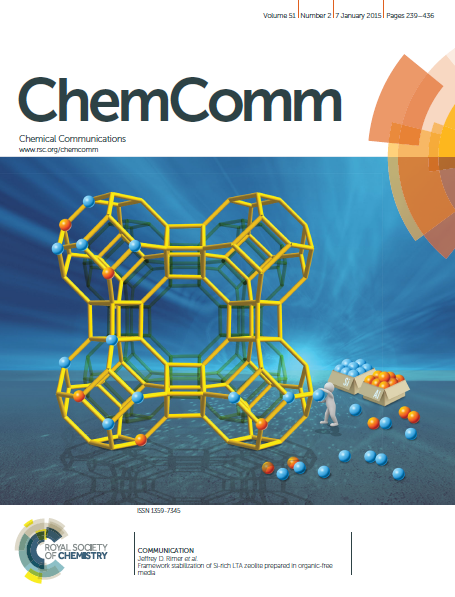
Cover Artwork
 Science
Science
Date: October 15, 2010
Volume: 330
Issue: 6002
Details: False-color scanning electron microscopy image of a cluster of L-cystine crystals captured on a porous filtration membrane after growth in the presence of a growth inhibitor. The tapered needles result from binding of the inhibitor at the crystal surface, which reduces the crystal growth rate and the crystal size (the cluster is 95 microns across). This suggest that inhibitors might be designed to prevent or limit the formation of L-cystine kidney stones.
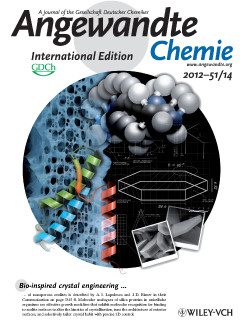
Angewandte Chemie International Edition
Date: April 2, 2012
Volume: 51
Issue: 14
Details: Bio-inspired crystal engineering of nanoporous zeolites is described by A.I. Lupulescu and J.D. Rimer in their Communication. Molecular analogues of silica proteins in unicellular organisms are effective growth modifiers that exhibit molecular recognition for binding to zeolite surfaces to alter the kinetics of crystallization, tune the architecture of exterior surfaces, and selectively tailor crystal habit with precise 3D control.
Journal of the American Chemical Society
Date: February 20, 2013
Volume: 135
Issue: 7
Details: Stages of organic-free zeolite crystallization are consistent with the Ostwald step rule where metastable phases nucleate and transform to more thermodynamically stable structures. Constructing kinetic phase diagrams via the judicious selection of synthesis parameters, such as water content, offers a versatile platform for tuning crystal properties and phase purity. See Rimer and co-workers, p 2641.
Chemical Communications
Date: January 7, 2015
Volume: 51
Issue: 2
Details: Zeolite HOU-2 (LTA type) is prepared with the highest silica content (Si/Al = 2.1) reported for Na-LTA zeolites without the use of an organic structure-directing agent. The rational design of Si-rich zeolites has the potential to improve their thermal stability for applications in catalysis, gas storage, and selective separations. See Rimer and co-workers, p 269.
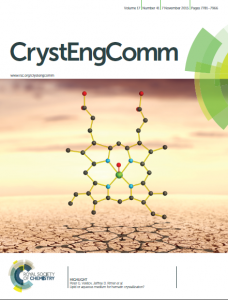 Crystal Engineering Communications
Crystal Engineering Communications
Date: November 7, 2015
Volume: 17
Issue: 41
Details: Hematin Crystallization in Water-Deprived Growth Environments. Hematin crystallization is the primary mechanism of heme detoxification in malaria parasites. Here, we show that water-saturated n-octanol serves as a biomimetic medium for crystal growth. This advancement has significant implications for the design of experiments to screen and assess antimalarial drugs. See Vekilov, Rimer and co-workers, p 7790.
 Chemistry: A European Journal
Chemistry: A European Journal
Date: November 2, 2016
Volume: 22
Issue: 45
Details: New approaches to tailor the synthesis of zeolite polymorphs can lead to breakthroughs in applications spanning from separations to adsorption. A comparison of small-pore zeolite GIS polymorphs P1 and P2 revealed marked differences in their thermal stability. Moreover, adsorption experiments and DFT studies collectively showed that GIS polymorphs are promising materials for selective separation of small molecules. More information can be found in the Full Paper by R. K. Motkuri, J. D. Rimer et al. on page 16078.
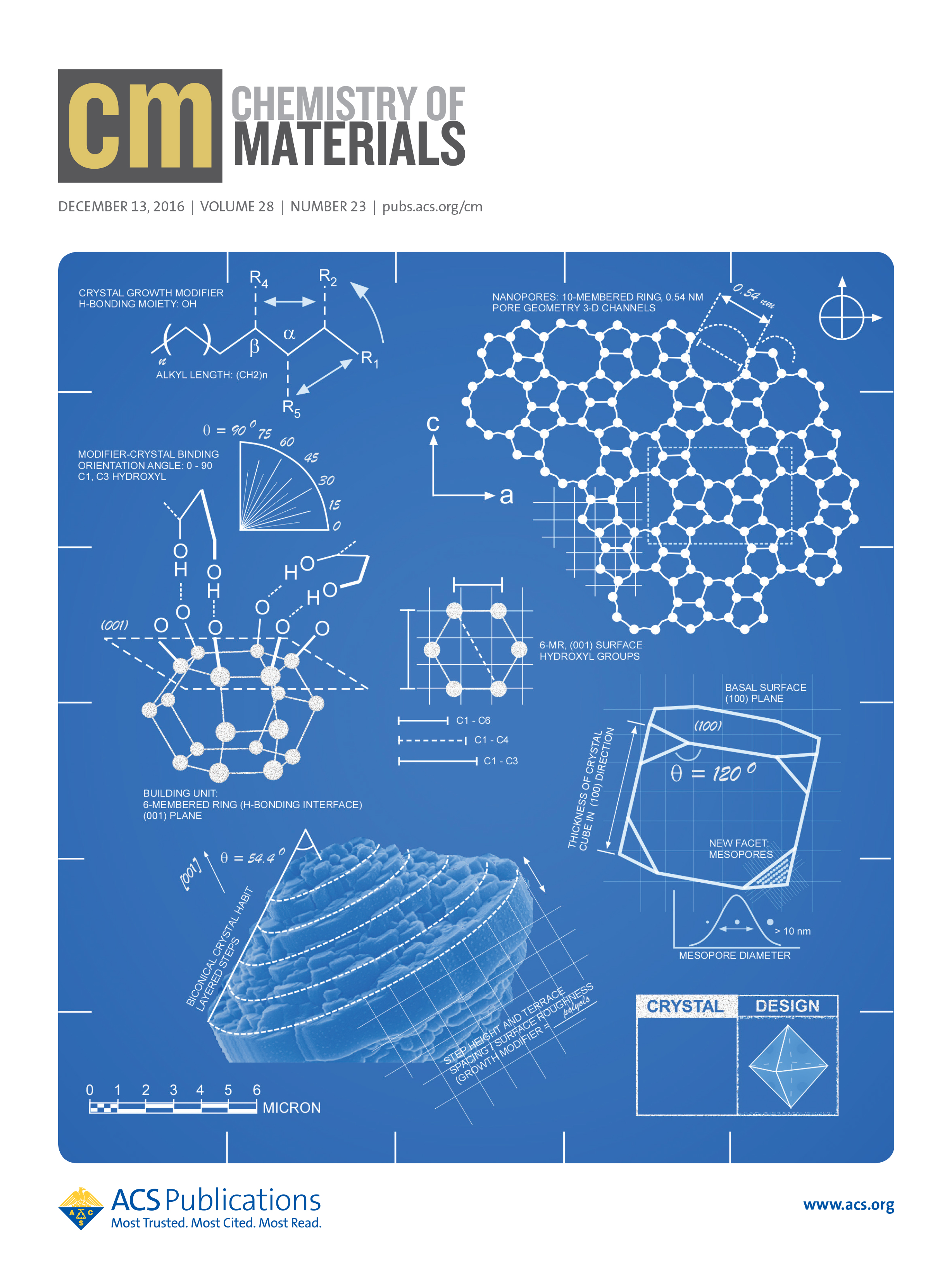 Chemistry of Materials
Chemistry of Materials
Date: December 13, 2016
Volume: 28
Issue: 23
Details: The theme of this cover artwork, “Blueprint for Crystal Engineering,” illustrates modifier-crystal interactions and their resulting impact on crystal properties. The artwork also highlights one of the most pervasive challenges in crystal engineering, elucidating modifier recognition of crystal surfaces. This Perspective article discusses key differences between classical and nonclassical growth mechanisms, presents an overview of theories describing growth modification, and provides a future outlook for the application of conventional approaches to nonclassical cases. For more information, see “Engineering Crystal Modifiers: Bridging Classical and Nonclassical Crystallization” by Katy N. Olafson et al.
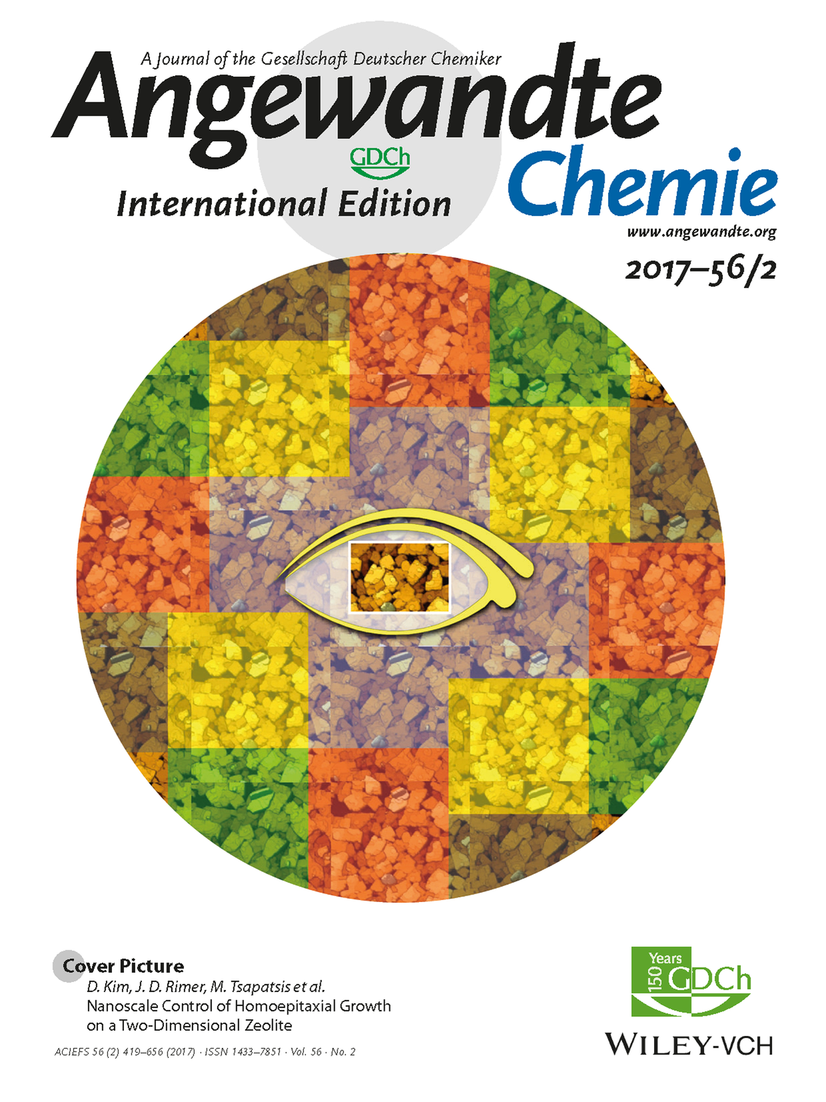 Angewandte Chemie International Edition
Angewandte Chemie International Edition
Date: January 9, 2017
Volume: 56
Issue: 2
Details: Akin to colors on an artist’s palette that enable them to paint the landscape according to their imagination; scientists are constantly seeking methods to manipulate nanoscale crystal features as they will. In their Communication on page 539 ff., D. Kim, J. D. Rimer, M. Tsapatsis, and co-workers report on epitaxial solution-based growth conditions enabling them to tailor 2D zeolite thin films and hierarchical catalysts at a scale that approaches single-unit-cell dimensions.
 Angewandte Chemie International Edition
Angewandte Chemie International Edition
Date:October 16, 2017
Volume: 56
Issue: 43
Details: Designing zeolites with tunable composition and acid siting is a significant challenge for applications in adsorption and catalysis. In their Communication (DOI: 10.1002/anie.201702672), W. Chaikittisilp, J. D. Rimer, and co-workers report on the synthesis of high-silica faujasite (HOU-3) with a Si/Al ratio of 3 and show that the Al locations within the structure are biased and not random.
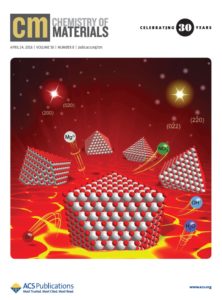
Chemistry of Materials
Date: April 24, 2018
Volume: 30
Issue: 8
Details: The driving forces governing the morphology of metal oxide particles exposing polar facets via the decomposition of suitable precursors in air, molten salts, ionic liquids, or other media are not fully understood. In this article, the authors investigate the thermal decomposition of MgO precursors in molten salts to assess the influence of precursor decomposition pathways, including the physical state of the reaction intermediates and the possibility of dissolution−recrystallization processes in the formation of octahedral MgO particles. It is shown that the presence of residual water and ions impact MgO(111) crystallization in ways that still remain elusive but are not necessarily governed by dsorption−stabilization processes. The cover illustrates that the formation of polar MgO(111) crystals is facilitated in molten salt media when MgO is generated via a liquid-to-solid reaction with intermediates in the molten state.

Industrial and Engineering Chemistry Research
Date: September 26, 2018
Volume: 57
Issue: 38
Details: This cover is dedicated to the 29 global scientists in the I&EC Research 2018 Class of Influential Researchers. The 2018 Class of Influential Researchers includes both reviews and regular research articles. Collectively, the papers report important new contributions across the broad landscape of research in chemical engineering and applied chemistry. There are many articles focusing on catalysis and reaction kinetics. Applications in view include combustion, diesel exhaust treatment, hydrodeoxygenation and hydrodenitrogenation, electrocatalysis, acid/base catalysis, the oxygen evolution reaction, and oxidative dehydrogenation of ethylene.
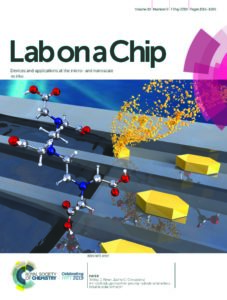
Lab on a Chip
Date: May 7, 2019
Volume: 19
Issue: 9
Details: This cover highlights a microfluidic platform to elucidate the time-resolved processes controlling crystallization and dissolution of barite. In situ optical microscopy reveals that addition of a common dissolution agent, diethylenetriaminepentaacetic acid (DTPA), alters the morphology of barite crystals grown under flow. In a dissolution environment, increasing the flux of DTPA enhances the rate of barite dissolution. The combined use of microfluidics and optical microscopy provides a robust and broadly-useful platform for capturing crystallization kinetics and morphological transformation under dynamic flow conditions.
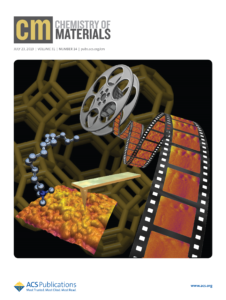
Chemistry of Materials
Date: July 23, 2019
Volume: 31
Issue: 14
Details: The facile reconstruction of zeolite USY surfaces during surfactant-templating was monitored by in situ atomic force microscopy. In this article, the authors show that pre-existing large mesopores in USY are transformed into a narrow distribution of mesopores. Using a combination of techniques, including transmission electron micrographs of ultramicrotomed samples, the authors reveal a homogeneous population of mesopores throughout the entire zeolite crystal.
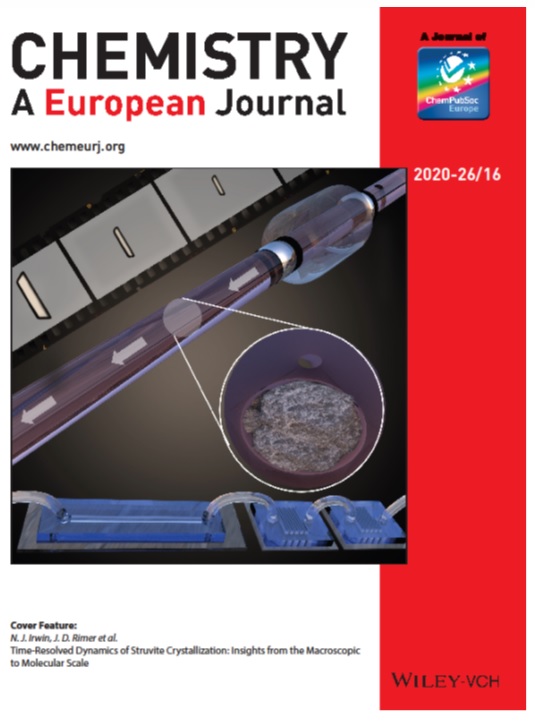
Chemistry: A European Journal
Date: March 19, 2020
Volume: 26
Issue: 16
Details: Crystallization in flow systems is a common occurrence in pipelines, catheters, and commercial processes. this accumulation of mineral scale, such as struvite, poses a problem. Microfluidic devices are an efficient platform to assess crystallization under flow conditions, in which time-resolved measurements allow the quantification of anisotropic growth rates at variable conditions. When coupled with techniques, such as atomic force microscopy, it is then possible to elucidate growth mechanisms and validate predictions made on the basis of macroscopic analysis. More information can be found in the Full Paper by N.J. Irwin, J.D. Rimer, et al. (DOI: 10.1002/chem.201904347).
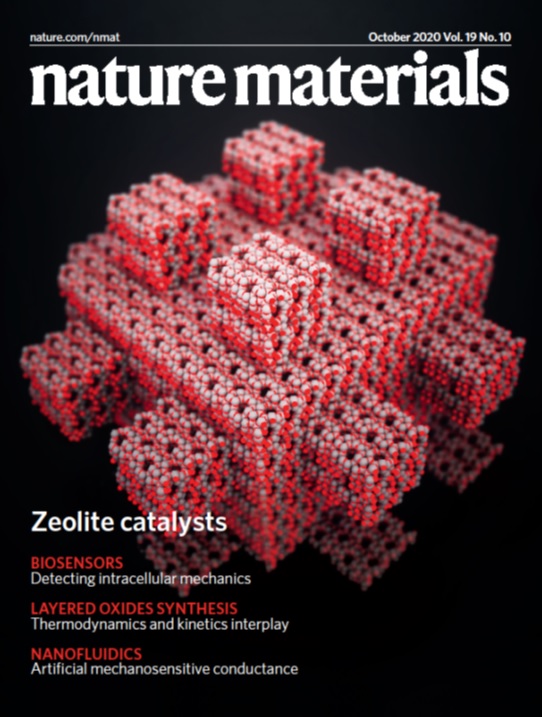
Nature Materials
Date: October 2020
Volume: 19
Issue: 10
Details: Nanosized zeolites enable better catalytic performance; however, their synthesis is non-trivial. Here, a simple treatment is presented that enables the growth of nanosized fins on zeolites that act as pseudo-nanoparticles, reducing deactivation rates for methanol-to-hydrocarbon catalysts. See Article by Dai et al.; see Editorial for focus issue; see News & Views by Sastre.
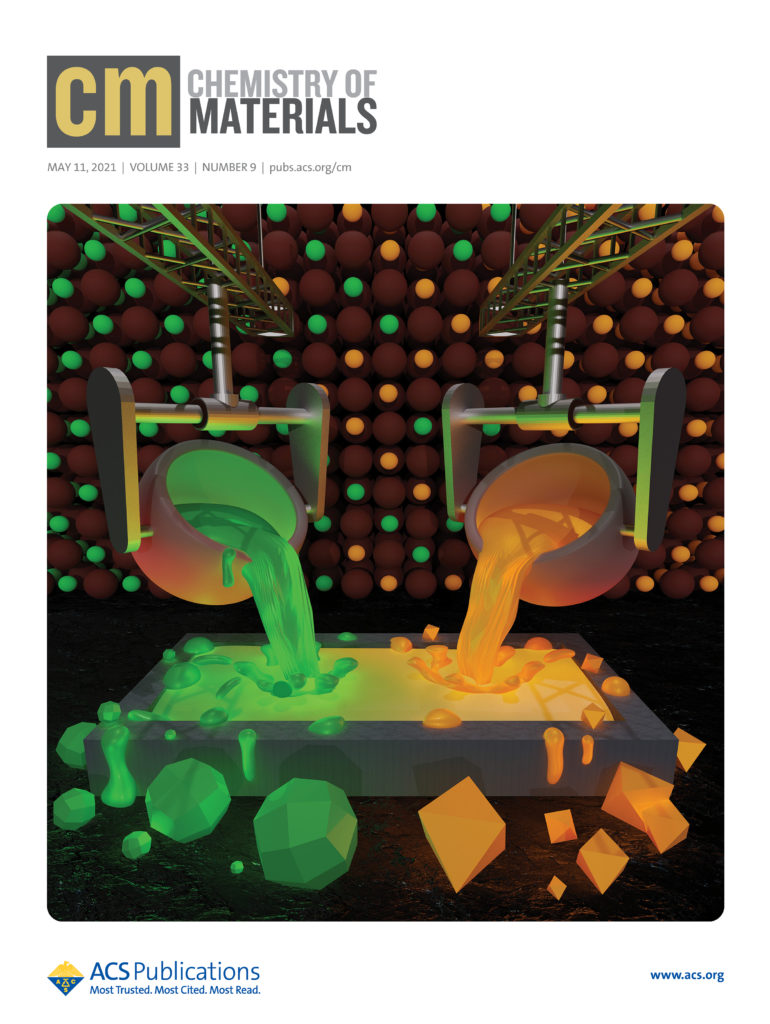
Chemistry of Materials
Date: May 11, 2021
Volume: 33
Issue: 9
Details: Molten salt synthesis is a versatile method of preparing metal oxide solid solutions with high-index facets and tailored crystal habit. This was demonstrated for (Ni,Mg)O crystals where the selection of the majority component (Mg or Ni0 switches the morphology from octahedral to trapezohedral shapes, respectively. The judicious selection of ions also plays a critical role in (Ni,Mg)O crystallization, with nitrate media promoting the formation of solid solutions and chloride media leading to the formation of segregated oxide phases.
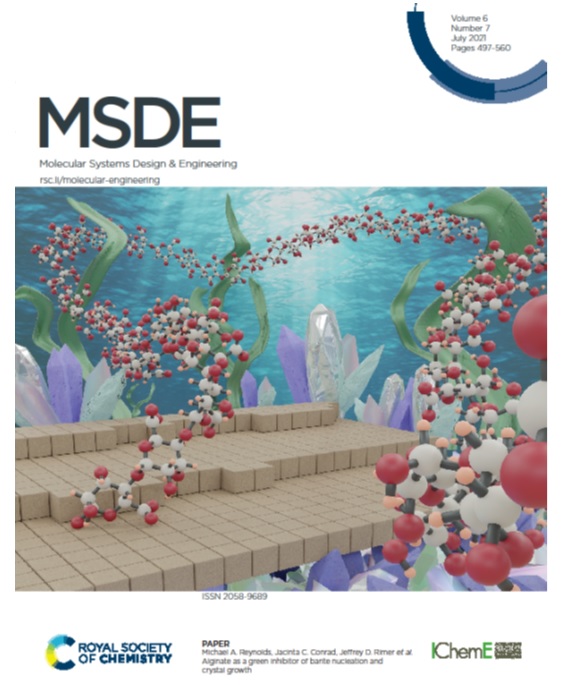 Molecular Systems Design & Engineering
Molecular Systems Design & Engineering
Date: July 5, 2021
Volume: 6
Issue: 7
Details: A method of inhibiting the formation of inorganic scale was designed wherein alginate, a bio-derived acidic polysaccharide from brown algae, is explored as an alternative to commercial scale treatments. Our findings reveal that alginate is unique based on its ability to fully suppress both nucleation and crystal growth of barium sulfate (barite) scale, which is an undesirable and ubiquitous phenomenon in industrial systems for wastewater treatment, energy production, and manufacturing. The findings in this study highlight the dual roles and exceptional performance of alginate as a promising and green alternative to current barite scale treatments.
 Angewandte Chemie International Edition
Angewandte Chemie International Edition
Date: November 22, 2021
Volume: 60
Issue: 48
Details: High-index NiO faceting during molten salt synthesis is investigated with density functional theory by J.D. Rimer, M. Maestri, and co-workers in their Research Article on page 25391. Trapezohedral NiO particles observed in experiments are shown to form in LiCl and KCl due to locally ordered alkali chloride structures, which act as capping agents during crystal growth. In the absence of salt, octahedral NiO particles are produced because of their stable hydroxylated surfaces.
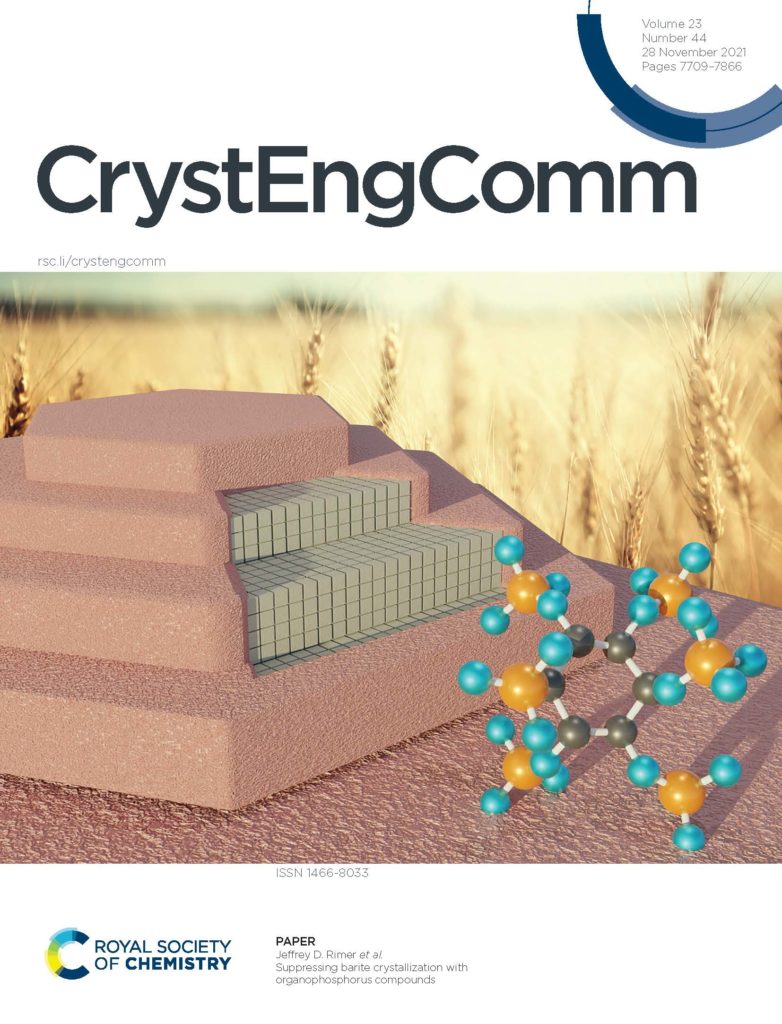 Crystal Engineering Communications
Crystal Engineering Communications
Date: November 28, 2021
Volume: 23
Issue: 44
Details: Here it is shown that a natural compound, phytate, is a potent inhibitor of barium sulfate (barite) nucleation and crystal growth. Phytate operates by a distinct mode of action leading to roughened barite crystal surfaces where layer advancement is completely suppressed and pyramidal macrosteps emerge on certain facets. These findings identify that phytate is a dual inhibitor of barite nucleation and growth, and is thus a potentially viable environmentally-friendly alternative to current treatments of barite scale.
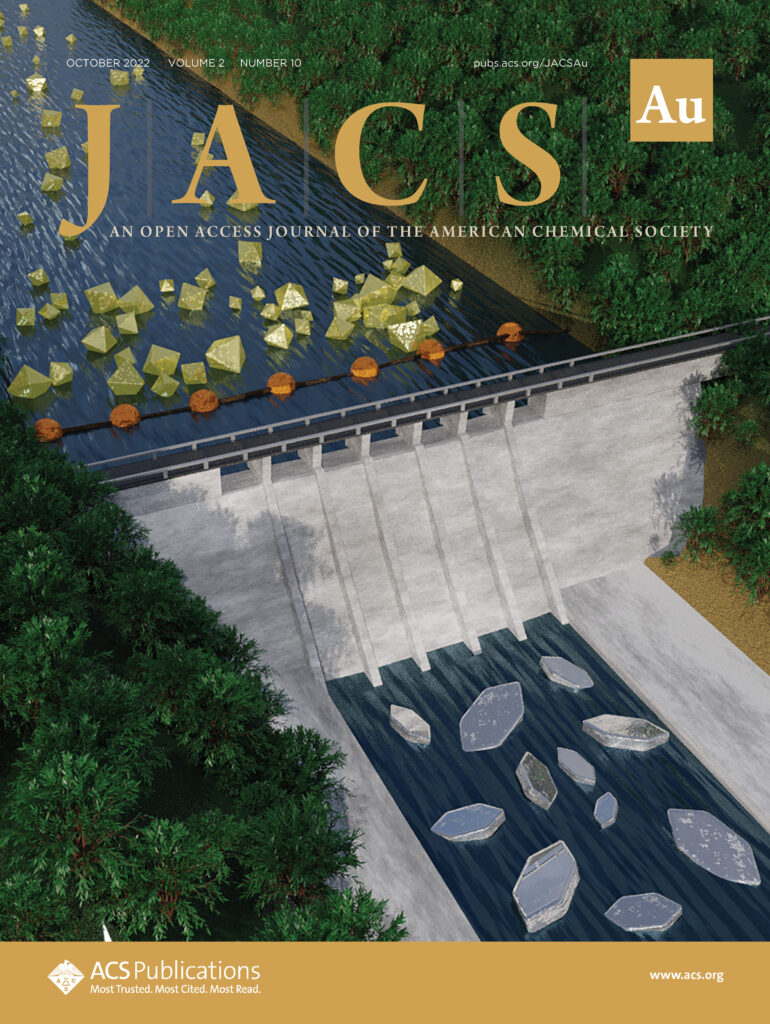 JACS Au
JACS Au
Date: October 24, 2022
Volume: 2
Issue: 10
Details: Zinc stabilizes faujasite (FAU), a thermodynamically metastable and commercially relevant zeolite, against interzeolite transformation to less desirable zeolite products. Combined experimental and theoretical studies show that zinc functions much like a dam to prevent downward “flow” to lower energy states by altering the chemical nature of the growth medium.
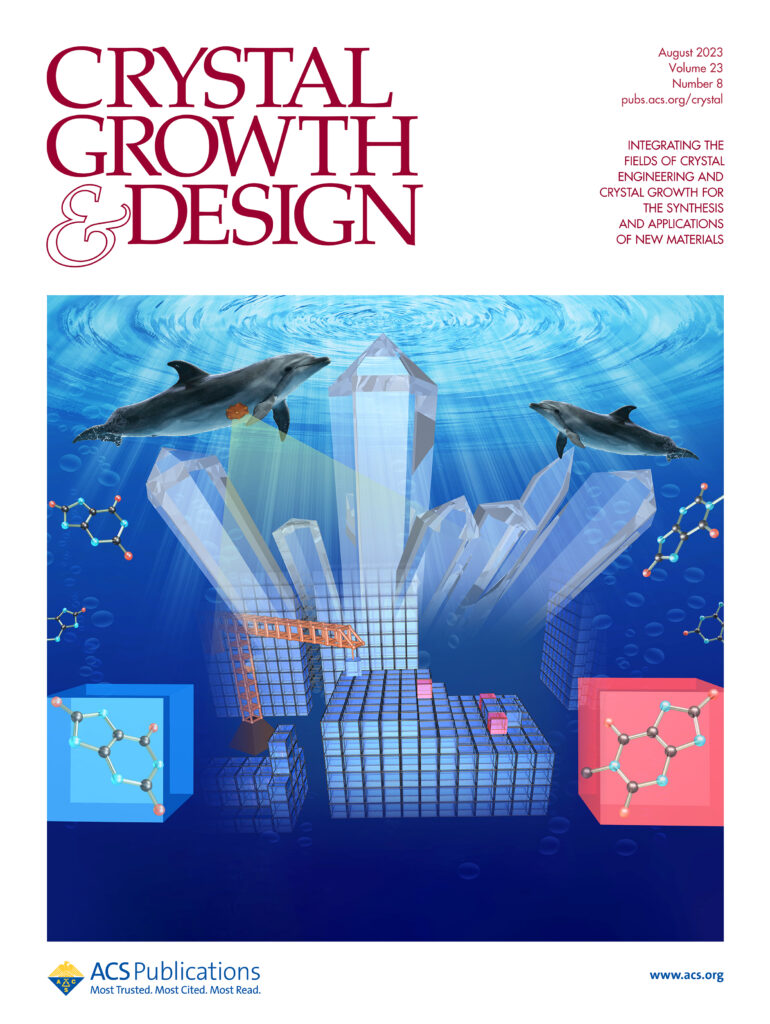 Crystal Growth & Design
Crystal Growth & Design
Date: August 2, 2023
Volume: 23
Issue: 8
Details: The cover art illustrates the function of molecular imposters as crystal growth modifiers of ammonium urate, which is a principal component of dolphin kidney stones. Molecules selected with structures similar to urate operate by multiple and sometimes opposing roles of promotion and inhibition of crystal surface nucleation and growth.

